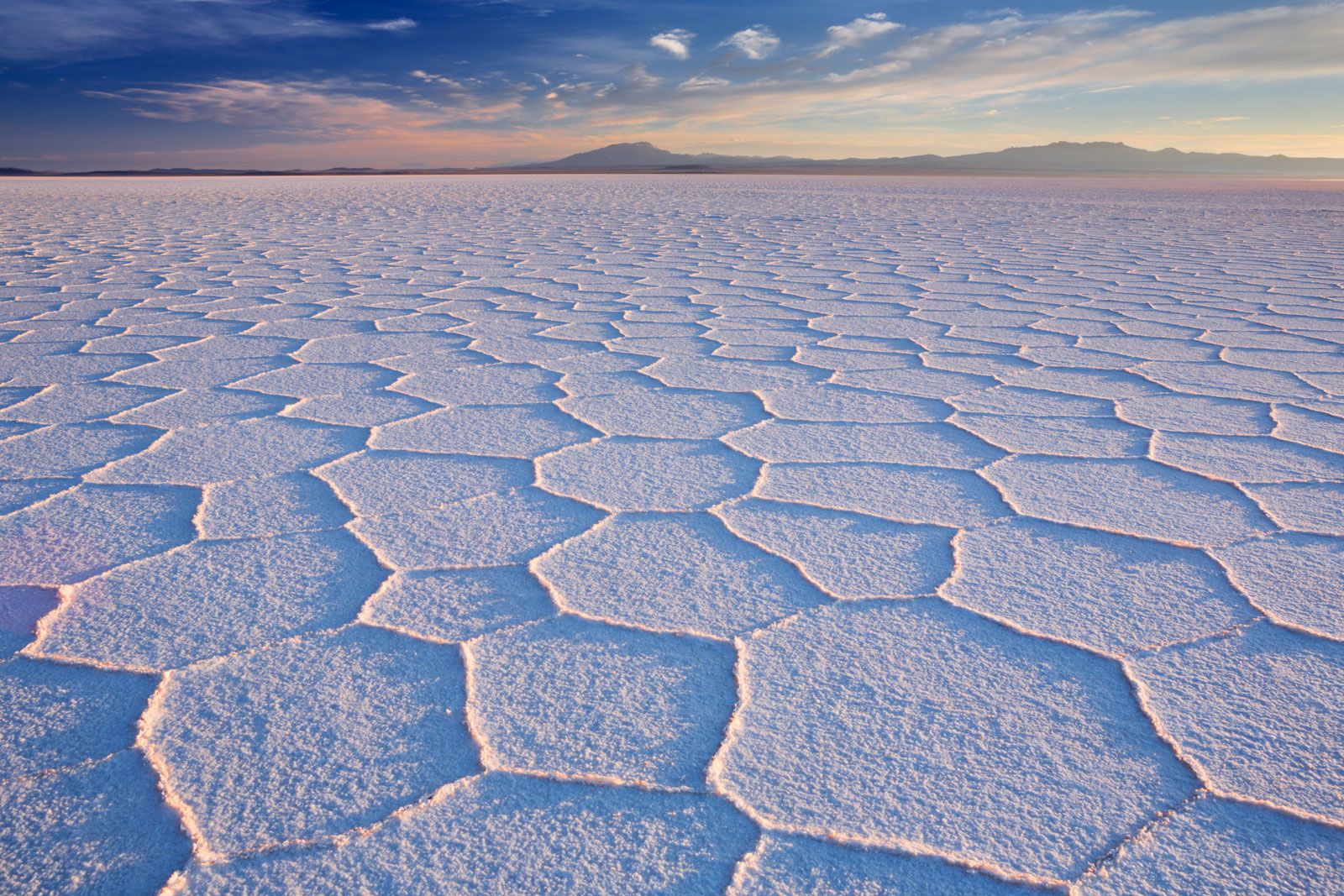The Similarity in Geometric Patterns of Salt Flats Worldwide Explained

Geometric salt polygons, such as pentagons and hexagons, form in playas all around the world. Dried mud, ice, and rock also crack into polygons, but these patterns vary significantly in size. Physicist Jana Lasser and colleagues from Graz University of Technology in Austria have determined that subterranean fluid flows could be the key to solving the puzzle of why geometric salt polygons of similar size persistently form in all playas.
The team performed experiments at Owens Lake in California, using a 3-D approach to connect what they saw on the surface with what is happening underground. According to Lasser, fluid flows and convection underground uniquely explain why the patterns form.
Salt flats form where rainfall is scarce and there’s a lot of evaporation. Groundwater seeps up to the surface, evaporates, and leaves a crust of salts and other minerals that had previously been dissolved in the water. The process results in low ridges of concentrated salt that divide the playa into polygons. Each salty polygon is 1 to 2 meters across and features a variation of mostly hexagons with a smattering of pentagons and other geometric shapes.
As groundwater evaporates from the surface, it concentrates salt in the remaining groundwater. The saltier water sinks as it is denser and heavier, forcing other less dense water upward. Over time, this circulation, known as convection, pushes the descending plumes of saltier water into a network of vertical sheets. The surface above these sheets accrues more salt, so thick salt ridges grow there. Thinner crusts of salt form between the ridges, where less salty water upwells, spontaneously making the characteristic polygons found in playas across the world.
Lasser and her colleagues used equations to describe the relative salinity of the groundwater, the pressure within the fluid, and the speed at which the water circulates. Computer simulations, that embraced the full complexity of the 3-D problem, started with no salt crust or polygons and produced something that looks very much like real playas. Tests at Owens Lake helped the team verify and refine the model.
“This fluid dynamical model makes much more sense than a model that ignores what’s happening beneath the surface,” says physicist Julyan Cartwright of the Spanish National Research Council, who is based in Granada and was not involved in the research.
Owens Lake has large natural concentrations of arsenic, which is blown away with dust kicked up by wind, creating serious health hazards. Among other remediation efforts, brine has been pumped onto the lake bed to try to create a more stable salt crust. This human intervention gave researchers the opportunity to test their ideas in a controlled way.
Supporting nonprofit news organizations, which provide engaging scientific news to the public, is more important than ever. Your donations enable quality science journalism to remain accessible to the next generation of scientists and engineers.




